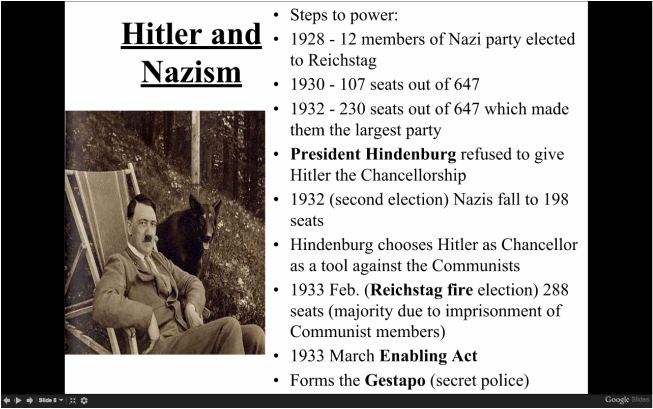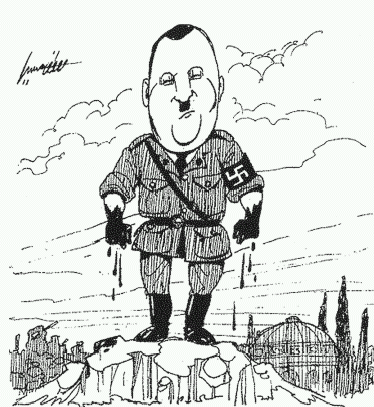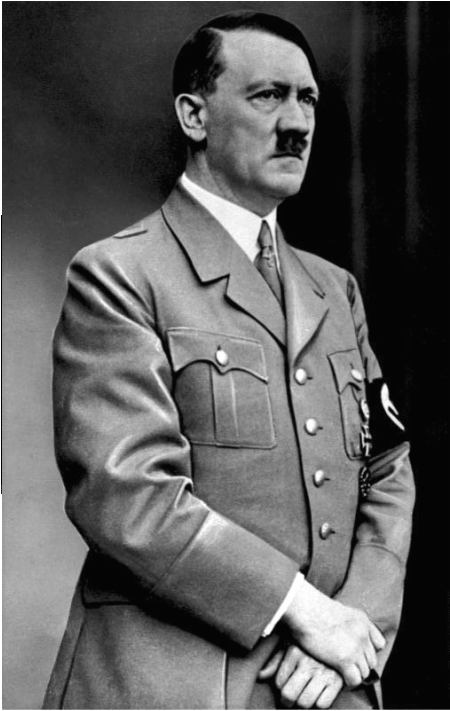Hitler

- Brown Shirts paramilitary (henchmen)
- led by Ernest Rohm
- burning of the Reichstag
- started by Dutch communist
- puts the enabling act into place
- only 93 democrats voted against it
- allowed hitler to pass laws without consulting the Reichtstag
Quotes
"I use emotion for the many and reserve reason for the few." - Hitler
Summary
Hitler created a paramilitary called the brown shirts, and officially came into power after the burning of the Reichstag was blamed on a dutch communist, then brought in the enabling act so that he could pass laws easily.
Subjunctive question
What if we knew who really burnt the Reichstag?
"I use emotion for the many and reserve reason for the few." - Hitler
Summary
Hitler created a paramilitary called the brown shirts, and officially came into power after the burning of the Reichstag was blamed on a dutch communist, then brought in the enabling act so that he could pass laws easily.
Subjunctive question
What if we knew who really burnt the Reichstag?


